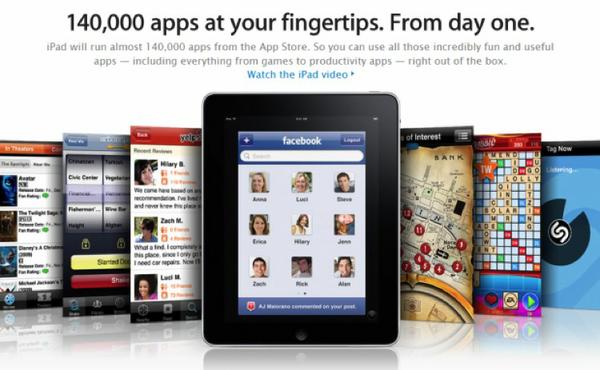In the field of marketing there's a saying that everyone's favorite radio station is WII-FM: "What's in it For Me?"
"Me" refers to each person who receives your marketing or advertising message. People pay closer attention to what they read, hear or see, when the content pertains to their own needs and interests.
WII-FM highlights benefits to the buyer, which may be different from the features of the product.
For example, Apple was a pioneer among manufacturers of electronics, by emphasizing what their products could do for people, rather than promoting megabytes, megapixels, and other features that the public didn't really understand. When the iPad first came out in 2010, its WII-FM message was clear and simple:

Benefits can extend beyond the product itself, as shown in this print ad from McDonalds in Australia. Everyone knows they can get fast food at McDonalds. But why should they eat there rather than at a competitor? The "what's in it for me" is free wifi. And using french fries to create the wifi logo reminds people of the best item on the menu. 😉

Pay attention to advertising by large companies. They spend millions of dollars testing and honing their message. Notice how they promote benefits, which not only answers the "what's in it for me" question, but also appeals to consumers' emotions. And research has shown that emotions tend to drive decisions more powerfully than facts.
How to use WII-FM in your marketing
WII-FM is especially important in promoting your mental health practice. Most of the general public are not familiar with the various theoretical approaches to psychotherapy, nor with the difference in training or licensure among psychologists, psychiatrists, social workers, counselors, and marriage and family therapists. People are more likely to choose a mental health professional based on whether they feel that the clinician can help them.
Therefore, on your website, the first thing that visitors should see is not a list of your credentials or philosophy of treatment, but rather some indication that you can help them with specific problems they might have.
Describe the types of problems in a way that makes sense for your target audience. If your target audience is in the general public, diagnostic terms such as depression, anxiety, relationship issues and learning disabilities may not be as meaningful to them as problems identified by symptom: loss of interest in things, difficulties sleeping, tension in the home, or lagging behind in school.
Such descriptions address "what's in it for me" in very specific ways that people can directly identify with. Once a web visitor believes that you can help them with their problems, they will be inclined to read more on your website, and to learn about your credentials and experience (which should be readily accessible from an "about me" tab).
In marketing to current and potential referral sources, lead with benefits you can bring to them and to their patients and clients. For example, for gastroenterologists you might emphasize that you can help their patients better manage the stress that exacerbates existing GI problems. For malpractice attorneys, you could focus on helping their clients manage the stress of going through the litigation process. For EAP providers you could note that you have flexible appointment scheduling so that clients won't have to miss work.
In general, whenever talking or writing about what you do, keep in mind the needs and interests of your audience, and give specific examples that they can relate to. As such, they are more likely to feel understood by you, and more likely to assume that you can help them.






